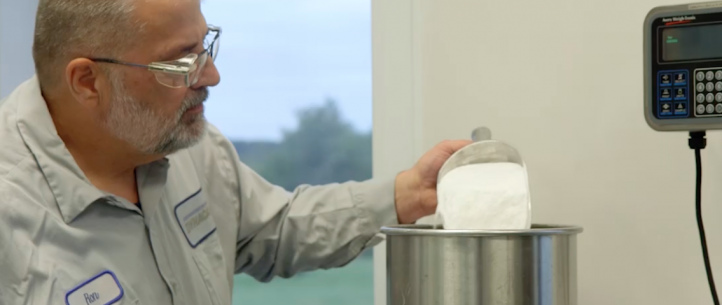blog 

MIM Series Part 2: Feedstock

In my previous blog post – MIM 101, I discussed the MIM process at a very high level. As promised, this next topic in our series is on feedstock. There are four steps to the MIM process – compounding, molding, debinding, and sintering. Feedstock is the end result of compounding. It is an essential and integral part of the entire MIM process. Selecting the correct mixture of powders is crucial to ensuring that the best possible part is manufactured.
To learn more about the MIM process, keep reading or contact our team of engineers.
What Is Feedstock?
Metal Injection Molding uses a combination of metal powders that is mixed with a plastic and wax binder. This is known as feedstock. It is the basis of what your part will become. At OptiMIM we mix our own feedstock, which gives us the ability to offer a wide range of metals for our customers to choose from.
Customers have many choices when selecting what metal mixture they would like. Some of the common feedstocks available are NiFe, 316SS, 420SS, 17-4SS, 4140, titanium, or copper. OptiMIM can also custom blend powders to meet specific requirements for mechanical properties, high temperature environments and weight.
Manufacturing the MIM powder
There are typically two ways to manufacture the metal powder – water atomization and gas atomization. Water atomization occurs when the molten metal is poured through a nozzle – the molten metal is then sprayed using water jets that create metal droplets. The particles are then quenched with water, and collected at the bottom of the tank. The liquid cools the particles quickly; the particles are rough and irregularly shaped. This process has better “brown part” strength and better consistency during the sintering phase of MIM. This process will allow more oxidization on the metal powder and will have higher oxygen levels.
Gas atomization is similar to water atomization where molten metals are atomized into fine metal droplets but uses an inert gas. The droplets cool down during the fall in an atomizing tower. This type of process offers a spherical shape particle, a high level of cleanliness, better powder distribution, superior oxygen control, and superior carbon control. Some of the disadvantages are poor “brown part” strength and sintering issues, including sag and drag.
After this atomization process, the particles created vary in size. The MIM industry normally uses particle sizes ranging from 4 to 25 microns. There are two common ways to separate and classify these powders: screening and air classification (also known as air separation). Screening uses various sized screens that allow the particles to be sized – the finer the mesh the smaller the particle size to be separated. Air separators use a column of air rising vertically to sort out heavier dense material from the material that is less dense. The larger heavier particles create more drag in the air stream. These finer particles rise and are separated. Typically the smaller the particle size the more expensive the powder however some powder manufactures have refined their process allowing high yields for small sized particles. In order to ensure that the particle size distribution is correct, it goes through a series of quality checks. We qualify the powder by using a particle size analyzer, which helps us know if the particle size is correct for the part we are producing.
We then use our mix sheets using the metal powders, wax and plastic binders to specific ratios (weight) allowing proper shrinkage is applied. These ingredients are mixed and blended together. This blended mix is then processed through a twin-screw extruder. The extruder then pelletizes the material into feedstock.
Part Three of this series will focus solely on the next step in the MIM process – compounding. What questions do you have for me regarding feedstock? Is there anything you'd like me to elaborate on? Contact our team of engineers if you have any further questions.
You may also be interested in:



